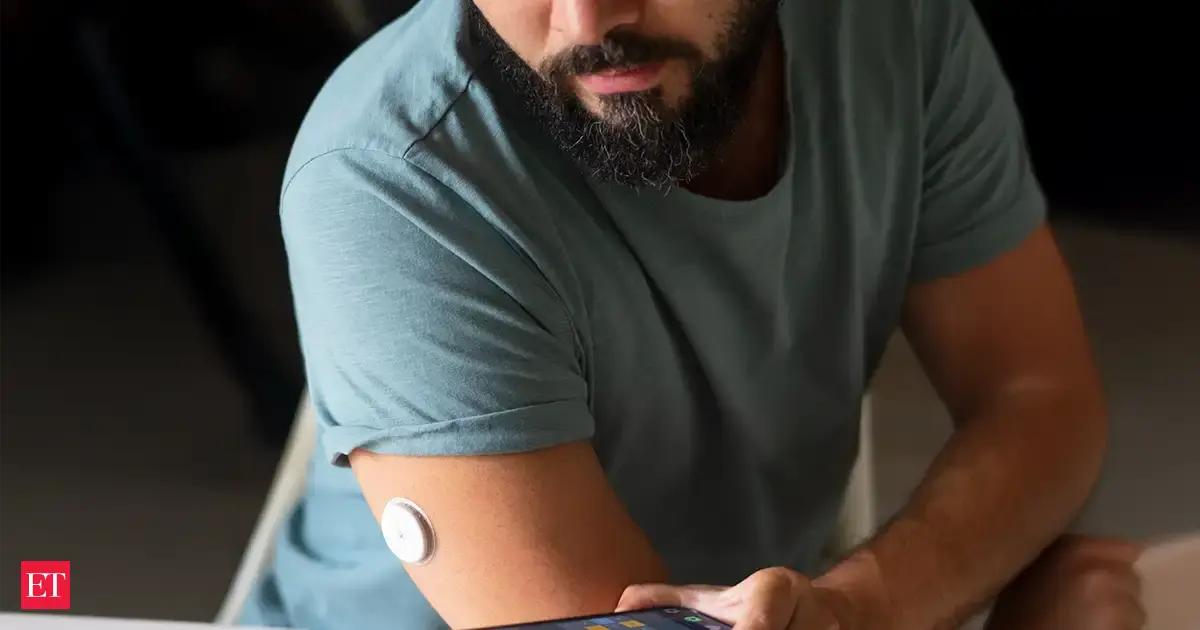India’s unique diabetes profile: The Indian diabetes phenotype—why our bodies react differently
By Novo Nordisk. The
Copyright indiatimes

ET Spotlight
Diabetes is on the rise in India, and the numbers are staggering: over 101 million people are already living with it, and the count is only going up1. However, the surprising part is how diabetes manifests in Indian bodies is quite different from how it appears in many other countries2. Researchers call this the “Indian diabetes phenotype”—a fancy way of saying our bodies often respond to and develop diabetes in unique ways.For starters, diabetes in India tends to appear earlier in life and at lower body weights than in the West. That means someone who looks slim could still have a high risk. This is because of what experts call the “thin-fat” body type3—looking lean on the outside but carrying dangerous fat deep inside the belly, wrapped around organs such as the pancreas and liver. This hidden fat, called visceral fat, doesn’t just mess with blood sugar levels—it also increases the chances of heart problems4.There’s more. Many Indians naturally have less muscle mass than other populations, and muscles are the body’s main sugar-processing “machines.” With less muscle, sugar stays longer in the bloodstream. On top of that, Indian bodies often find it harder to make enough insulin—the hormone needed to control blood sugar5. This double challenge means even younger people can develop diabetes; in fact, cases are now common in those under 40, and sometimes even in their twenties6. Why does this happen? Part of the story is in our genes—certain genetic patterns seen more in Indians make it harder to produce insulin and easier to store fat in the wrong places7. But early-life nutrition also matters. If a child or a baby in the womb doesn’t get proper nourishment, their metabolism can be “programmed” in a way that raises diabetes risk later in life8. Then there’s the significant lifestyle shift: more sitting, less physical activity, and diets rich in white rice, wheat, and processed snacks9. Add sugary drinks and fried treats, and the body’s sugar control system becomes overloaded.ET SpotlightA big concern is that around 53% of Indians with diabetes don’t even know they have it10. Often, outward appearance doesn’t give any clue, so unless people get tested, the condition may only be discovered when complications—possibly affecting the heart—start to show.Live EventsThat’s why knowing your waist size, muscle strength, and family history can be just as important as checking the number on the weighing scale11. Simple steps—like getting regular check-ups, choosing balanced meals with whole grains, proteins, vegetables, and healthy fats12, and staying active every single day—can make a big difference. Not just walking or cardio, but also muscle-building workouts such as resistance training or yoga help the body use sugar more effectively, reduce hidden belly fat, and protect both blood sugar and heart health13. ET SpotlightIndia’s battle with diabetes isn’t just about saying no to sweets—it’s about understanding our unique body type and acting early. The more we adapt our daily habits with this knowledge, the better our chances of avoiding not only diabetes but also its dangerous companions like heart disease14.References:Indian Council of Medical Research–INDIAB study, 2023Global Burden of Disease Study, India trends, 2025National Family Health Survey of India, Nature Scientific Reports, 2023JOGH: Undiagnosed Diabetes in India, 2023Strategic Research Framework for Defeating Diabetes in India, 2023IDF Diabetes Atlas, India statistics, 2025Nature Reviews Endocrinology: Pathophysiology & Phenotypes, 2022ScienceDirect: Young-onset diabetes in India, 2025The Lancet: Genetic Variants & Type 2 Diabetes in India, 2025JAPI: The Unrelenting Epidemic of Diabetes in India, 2025Diabetes Facts and Figures: IDF, 2025European Journal of Clinical Nutrition, 2024Circulation: Heart Health & Diabetes in India, 2025Indian Heart Association, 2025Disclaimer: This content is part of a disease awareness initiative by Novo Nordisk. The opinions and views are that of the Healthcare Professionals. The news and editorial staff of ET had no role in the creation of this article nor vouch for or endorse any of its content. While the content on this site provides general information about health and wellbeing. It is not intended as medical advice, nor is it a substitute for professional medical expertise or treatment. If you need help getting your health under control, we recommend speaking to your doctor.Add as a Reliable and Trusted News Source Add Now!
(You can now subscribe to our Economic Times WhatsApp channel)
(This article is generated and published by ET Spotlight team. You can get in touch with them on etspotlight@timesinternet.in)
Read More News ondiabetesindia’s unique diabetes profilediabetes phenotypeindian diabetes phenotypediabetes profile
(Catch all the Business News, Breaking News, Budget 2025 Events and Latest News Updates on The Economic Times.) Subscribe to The Economic Times Prime and read the ET ePaper online….moreless
(You can now subscribe to our Economic Times WhatsApp channel)Read More News ondiabetesindia’s unique diabetes profilediabetes phenotypeindian diabetes phenotypediabetes profile(Catch all the Business News, Breaking News, Budget 2025 Events and Latest News Updates on The Economic Times.) Subscribe to The Economic Times Prime and read the ET ePaper online….moreless



